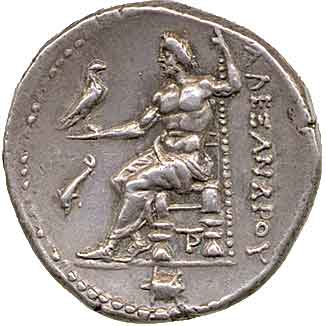Heracles to Alexander the Great
Treasures from the Royal Capital of Macedon, a Hellenic Kingdom in the age of Democracy.
An extraordinary exhibition of ancient artifacts from Vergina in Macedonia will be on display at the Ashmolean Museum at Oxford University from April 7 to August 29, 2011 (http://www.ashmolean.org/exhibitions/heracles/). Although it is no substitute for seeing the actual exhibit, there are two BBC videos that give one a taste of what has been loaned by Greece, including much material that is new even to archaeologists (other than the excavators themselves).
The first report (“Greek treasures on display at Oxford’s Ashmolean Museum: http://www.bbc.co.uk/news/uk-england-oxfordshire-13011954) shows masses of nails from a coffin, a gold wreath, weapons, etc. In the background for a part of the piece is the painting of the Rape of Persephone from Tomb I at Vergina. When you visit the exhibition, be sure to look closely for the incised guide lines that the unknown painter used as the preliminary sketch for this ancient masterpiece.
The second report (“Macedonians created cement three centuries before the Romans: http://www.bbc.co.uk/news/world-europe-13046299) is a little misleading because cement has been attested already two centuries even earlier in Greece, and because the narration gives the impression that the modern passageway to the tumulus is the ancient “cement” building. But the artifacts are extremely important, especially the ceramics shown first in the hand of Christopher Brown at the 1:36 point in the video, and again more clearly at the 2:00-2:05 point. The gold and silver material from Vergina dazzles, but is also so rare that we cannot compare it to other similar artifacts. The pottery, however, is more humble and more typical of everyday life and is, therefore, more important in showing that it, like everything else from Macedonia, was typically Greek. One recognizes, for example, pottery made in Corinth and in Athens from the 6th and 5th centuries B.C.
Finally, the review by Robin Lane Fox in the “Financial Times” (http://www.ft.com/cms/s/2/5f489386-6137-11e0-ab25-00144feab49a.html#ixzz1Iu8PZO6M) is yet another way to get a glimmer of the importance of this exhibition.
Although archaeologists who have done their homework in the last 30 years will not be surprised by the Greekness of the physical remains from ancient Macedonia as seen in the Ashmolean, the general public needs to have this firsthand experience. It is an education. If its language was Greek, if its Gods were Greek, if its pots and pans were Greek, it should be understood that ancient Macedonia was Greek.
Letter to President Obama
-
- On May 18th, 2009,
200 Classical Scholars from around the world, sent a letter to the President of the United States of America, Barack Obama. - On June 22nd, 2009,
an update with 332 signatures was sent.
Since then, the list of cosigners has grown to 376, see Addenda.
- On May 18th, 2009,

Macedonian coin, stating in Greek: "ΑΛΕΞΑΝΔΡΟΥ"
(in English: "ALEXANDER'S")